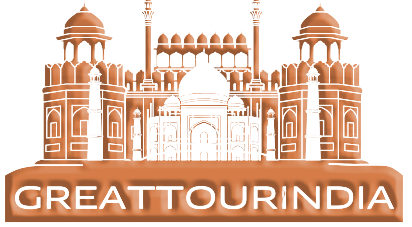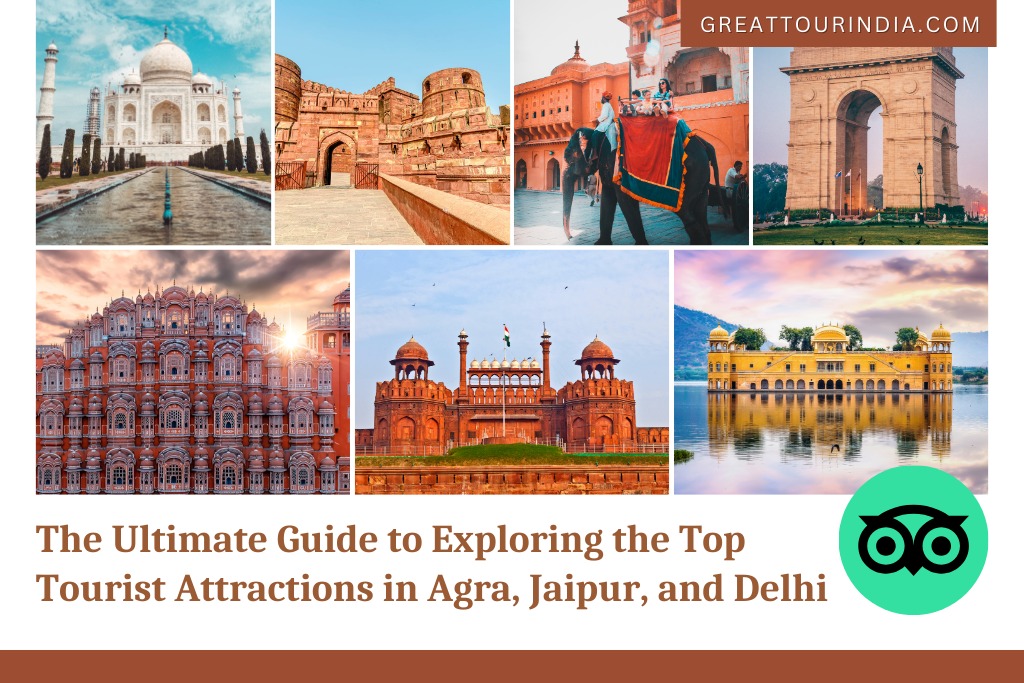India’s Golden Triangle is the set of Agra, Jaipur, and Delhi, a circuit much coveted for the ruins in history, vibrancy in culture, and silhouette in architecture. This region has something for anybody, whether you are a history enthusiast, an architecture admirer, or someone who loves to absorb the culture of the place. Let’s go through the top tourist attractions of each of these cities to make your tour most memorable.
Top Tourist Attractions in Agra
- Taj Mahal
One of the world’s most famous monuments is the Taj Mahal-it’s a monument to eternal love. Constructed by Emperor Shah Jahan in memory of his beloved wife Mumtaz Mahal, this white-marble mausoleum was a place awarded UNESCO World Heritage Site status and admired for its stunning Mughal architecture. Intricate carvings, lush gardens, and the reflection of the Taj in the adjacent pools create a mesmerizing experience. - Agra Fort
The Agra Fort is the third UNESCO World Heritage Site by the Taj Mahal. The red sandstone fort was the abode of the Mughal emperors and an excellent example of Mughal architecture. Several palaces and gardens in the fort, including the Jahangiri Mahal and Khas Mahal, are worth exploring. - Mehtab Bagh
The best view of the Taj Mahal at sunset can be seen at Mehtab Bagh, a Charbagh garden complex situated in the Yamuna River. This quiet garden presents a good photography opportunity and an easy chance to have some peace from the tourists.
Top Tourist Attractions in Jaipur
- Amber Fort
Amber Fort is a Hilltop fort and one of the most magnificent forts in India. Rajput and Mughal architecture is reflected in the design of this fort with very intricately decorated rooms, grand courtyards, and mirror work in the Sheesh Mahal. The most popular way to ascend to the fort is by an elephant ride, which gives it a royal experience. - Hawa Mahal
The Hawa Mahal, or Palace of Winds, is one of the best-known landmarks in Jaipur. Its uncommon five-story facade has 953 small windows, or jharokhas, intended to enable female royalty to view street festivals unseen. Most certainly, this architectural wonder is to be viewed in early morning light. - City Palace
Located in the city of Jaipur, the City Palace is a majestic monument that is an excellent blend of Mughal and Rajasthani architecture. There are numerous buildings, courtyards, and museums in the palace complex that store royal costumes and textiles along with other artifacts. Visitors must see the Chandra Mahal and the Mubarak Mahal on the premises of the palace. - Jantar Mantar
The Jantar Mantar at Jaipur is an astronomical observatory by Maharaja Jai Singh II. It is also a UNESCO World Heritage site and houses the world’s largest stone sundial. Here, one finds instruments to study movement in other worlds making it a very interesting destination for any science enthusiasts.
Top Tourist Attractions in Delhi
- Red Fort
This has been the principal residence of Mughal emperors for nearly two centuries. The Red Fort is a UNESCO World Heritage Site made of red sandstone houses some museums narrating the history of the freedom struggle of India. - Qutub Minar
Another of the UNESCO World Heritage Sites, the 73 meters tall Qutub Minar is the tallest brick minaret in the world. Surrounded by ancient ruins, including the mysterious Iron Pillar, scientists have been unable to determine why it has not rusted throughout the centuries. - Humayun’s Tomb
Taj Mahal’s precursor Humayun’s Tomb is an excellent example of Mughal architecture and a first garden tomb in India, surrounded by lush gardens, and the design of the tomb paved the road for all the future Mughal masterpieces. Best for history lovers and photographers. - India Gate
A war memorial for Indian soldiers who died in World War I, India Gate is an imposing archway standing tall at 42 meters high in the heart of New Delhi. Encircled by gardens, it forms a very beautiful evening stroll and picnic spot. Of course, the monument has gained even greater significance with the Amar Jawan Jyoti, a burning flame in honor of the soldiers. - Lotus Temple
This is a unique Bahá’í House of Worship famous for its lotus-like structure. The temple not only showcases attractive architecture but is also famously known for its serene atmosphere, attracting all religions to meditate and reflect upon.
Best Time to Visit the Golden Triangle
The best time for visiting Agra, Jaipur, and Delhi is during the periods between October to March; the weather is cool and pleasant, and the time is perfect for visiting places. It is absolutely ideal for sightseeing, as summers are unbearably hot, and the monsoons bring heavy rains, which sometimes can also spoil one’s travel plans. The cooler months allow you to go through all of the outdoor attractions comfortably and to enjoy local cuisine without the hassle of extreme temperatures.
What to Eat in the Golden Triangle
- Agra: You should not leave town without tasting Petha, a white pumpkin sweets, and try to order the tasty Bedai with Sabzi, it’s a normal breakfast dish.
- Jaipur: A great place to have the Rajasthan dinner through Dal Baati Churma; or, spice up the richness of Laal Maas, a hot and spicily spiced meat curry.”.
- Delhi: Famous for its road food, treat yourself to Chole Bhature, Aloo Tikki, and the all-time in-demand Butter Chicken in one of the many iconic eateries.
Conclusion
From the splendour of Mughal architecture, to the delight of royal palaces, and the astronomical wonders, Golden Triangle promises an unforgettable journey. Be it the Taj Mahal in Agra, the Amber Fort in Jaipur, or the Red Fort in Delhi, there is ample history to be found in these cities that allow travelers a deep dive into India’s rich cultural heritage. So pack those bags, get ready to explore, and don’t forget to sample the amazing local cuisine along the way!


0 Comment